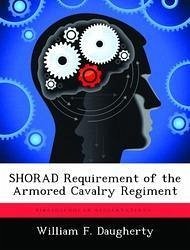The problem addressed in this thesis is to determine the short range air defense (SHORAD) requirement of the armored cavalry regiment (ACR) against low altitude air attack. Based upon an analysis of recent Mideast wars, unrestricted, modern aerial weaponry has the capability to neutralize the maneuver and effectiveness of the ACR. The large and sophisticated Soviet threat consists of 4,500 high performance aircraft and heliborne forces. COL A.A. Sidorenko's book The Offensive provides significant insight into Soviet air attack priorities. In terms of regimental assets, Soviet air attack priorities are: (1) howitzer batteries as nuclear capable weapon systems; (2) tank companies as local reserves; (3) command posts; (4) armored cavalry troops. As a target, the ACR consists of at least 26 critical assets ranging from small command posts and troop/company/battery-sized units to the large regimental field trains. Before determining the SHORAD requirement, the regiment's organic passive and active air defense measures must be maximized and evaluated. Passive air defense can be the primary air defense for command posts, combat trains and dispersed armored cavalry troops; they are least effective for helicopter assembly areas, the regimental field trains, and howitzer batteries. The majority of the regiment's huge potential for small arms for air defense (SAFAD) is found in the 9 armored cavalry troops. Using the volume fire technique, SAFAD can provide effective final defensive fires capable of destroying Soviet aircraft or degrading their bombing accuracy. In conjunction with passive air defense, SAFAD provides the armored cavalry troop adequate air defense. Redeye, as the organic SHORAD capability of the regiment, complements SAFAD. A full Redeye section can adequately defend one critical asset, with the exception of the regimental field trains. Using a desert (Fort Bliss) scenario as a vehicle, the regiment's SHORAD shortfall in a corps advance covering force mission
Hinweis: Dieser Artikel kann nur an eine deutsche Lieferadresse ausgeliefert werden.
Hinweis: Dieser Artikel kann nur an eine deutsche Lieferadresse ausgeliefert werden.








